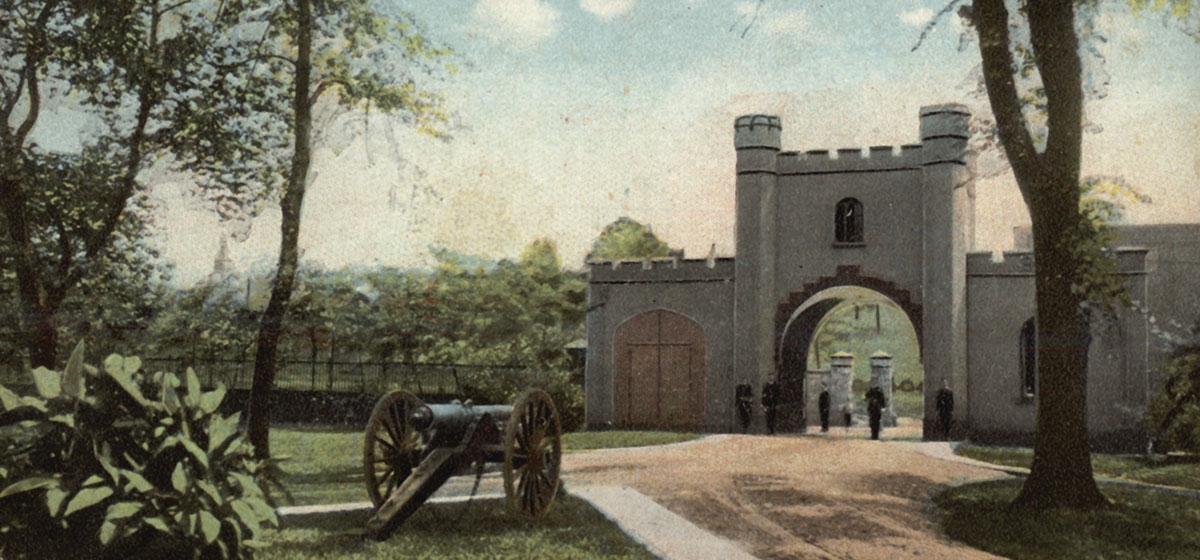Sept. 17, 1862—The Day Pittsburgh Exploded

“Tread softly, this is consecrated dust. Forty five pure patriotic victims lie here, a sacrifice to freedom and civil liberty. A horrid memento of a most wicked rebellion. Patriots! These are patriots’ graves.” –Inscription on the memorial at Allegheny Cemetery
The only trouble with the inscription is that the people who rest here weren’t “planning to fight for the union cause, let alone die for it.”
They weren’t soldiers who expected battle danger. They were civilians— almost all young women and girls, as young as 12—working jobs at the Allegheny Arsenal in Lawrenceville. There, three consecutive explosions ripped through the manufacturing plant on the afternoon of Sept. 17, 1862. The blast killed 78 people and wounded many more.
The explosions that blew up the arsenal—where about 1,100 workers created and packed munitions during the Civil War years, 1861 to 1865—rained burning debris and bodies upon the city, and broke windows in the surrounding Lawrenceville neighborhood. The exact cause of the blast remains a mystery, but it caused such damage to the victims that authorities only found unrecognizable bodies or body parts, which lie in a mass grave under and around the memorial at nearby Allegheny Cemetery.
“Civilian fire companies rushed to the scene and tried to douse the flames the best they could,” says Andy Masich, president and chief executive officer of the Senator John Heinz History Center in the Strip District. “People rushed to try to find loved ones. Many were taken home or to hospitals.”
Sept. 17, 1862 was one of the darkest days in Pittsburgh history, if not the worst. The Allegheny Arsenal explosion also coincided with one of the most tragic events in American history: the Civil War’s Battle of Antietam, fought the same day, 185 miles southeast of Pittsburgh by the tiny town of Sharpsburg, Md. There, some 22,720 Union and Confederate soldiers were killed, wounded or captured in the bloodiest day in American history.
Newspaper front pages across the country reported on Antietam, but Pittsburgh papers had two major disaster stories on Page One—one national, and one very local. The arsenal got the emphasis, given the location.
“Everybody in Pittsburgh had friends and loved ones killed in battle at Antietam,” Masich says. “It’s certain that people in Pittsburgh never forgot September 17… but the rest of the country was so numb by the horror of civil war.”
Why were the workers mostly women and children, during the 19th century? Was this a predecessor to Rosie the Riveter movement, which would come some eight decades later during World War II? No, Masich says.
Although some employees may have worked at the arsenal because so many men were off fighting the war, most of the women and youths got their jobs because their male predecessors behaved recklessly, he says. Supervisors often caught the boys with matches, which in an arsenal would be akin to smoking at a gas pump.
After three warnings to get rid of the smoking material, the arsenal dismissed most of the boys and hired women and girls instead; supervisors found them to be more reliable and efficient, and they didn’t smoke. This was before child-labor laws, and many factories relied on children to do their work—and their families relied on the income.
At the arsenal, these female employees were appreciated and beloved by many—including Alexander McBride, the superintendent of the arsenal’s ammunition laboratory. His own daughter—Kate, 15—died in the blast, which happened around 2 p.m., when a worker was delivering barrels of gunpowder in a horse-drawn wagon. Three explosions followed, a few minutes apart, in different parts of the arsenal’s buildings. Some victims may not even have been working that day; it was payday, and some may just have come to collect their money.
What caused the disaster at the Allegheny Arsenal 155 years ago remains one of those mysteries that passed into history with the generation. Two investigations conducted soon after the explosion—one by the military, and one by the coroner—produced inconclusive results. However, a jury found several arsenal leaders —including McBride, who was grieving the death of his daughter— guilty of gross neglect in the disaster at the arsenal, which closed in the early 20th century.
Plenty of people, back then and until today, have speculated about the cause and come up with different theories. One proposes that the horse pulling a wagon struck its iron horseshoe on spilled gunpowder that should have been swept into a pan; one employee reported seeing a spark flash near one of the horse’s hooves. Some people think the steel spring hoops that women wore under their dresses in those days may have caused a spark that ignited gunpowder, from silk and wool rubbing on the metal.
Others offered more sinister, non-accidental theories, such as Confederate sabotage or revenge by the boys who’d been fired.
Recently, the Heinz History Center—which dedicates a portion of its “Pittsburgh: A Tradition of Innovation” exhibit to the arsenal story—held a mock trial, with experts, lawyers and coroners. They recreated the 19th-century arsenal investigation, and tried to identify the most plausible explanation. Masich thinks the most likely scenario is that DuPont, a company making gunpowder for the arsenal, was improperly re-using barrels to send fresh powder to Lawrenceville. Company workers were supposed to use new barrels every time, but may have become careless to save on costs. Gunpowder may have leaked out of the used barrels onto loading docks or the wagon. With such explosives unsecured, a tiny spark— from a horseshoe, or maybe a wagon wheel—could have triggered a massive explosion.
“There might be a little bit of blame in a lot of different places,” Masich says. “Whoever was to blame, it was one of the worst industrial accidents in American history and certainly the worst of the Civil War.”
Lawrenceville’s 9-acre Arsenal Park commemorates the site where some remnants remain, and recently, a builder discovered hundreds of Civil War-era cannonballs at a construction site on part of the former arsenal’s 38 acres.





